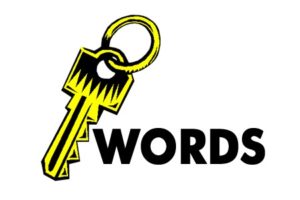If you’re one of the millions of Americans who’s been under some level of COVID-19 quarantine restrictions over the last several months, you’re probably starting to feel a little restless these days. You’ve organized the garage, participated in virtual happy hours, and run out of stuff to stream — now what?
Whether you’re on the job hunt after becoming unemployed or you’re just on a mission to find something bigger and better, you’re in the right place! In this post, we’ll show you some ways to resolve both your boredom and ramp up your resume during quarantine. From certificates to skills, read on to find out the top seven things you can do to boost your resume without ever leaving your couch!
- Web Design and Management
When employers think about the qualities of a good employee, the words “driven,” “self-motivated,” and “passionate” often come to mind. So, what better way to impress a potential employer than by showing off some self-taught skills? With a little help, of course…
In the digital age, experience with web design and management is an invaluable skill worth reaching for. And thanks to the same technology, it’s easier than ever to learn how to build, design, and launch a website at your own, self-guided pace. What’s more, your practice site can become your very own living portfolio where you can host your resume, work samples, contact details, social media links, and more.
Here are some of the top-rated online web design courses and platforms to choose from:
- Webflow University
- UDemy
- SkillShare
- Coursera
If you want to build from templates rather than code your way from the ground up, you might check out user-friendly platforms like Squarespace, WordPress, and Wix.
- Visual Design
If you’re looking for a career in the creative realm, a great way to boost your skills is to get hands-on with design. Photo editing, illustrating, and designing page layouts are just a few of the things you can learn using the Adobe Suite program.
- Language
Knowing how to read, write, and speak in another language is always a great skill to have, no matter what kind of work you do. In fact, many workplaces will pay employees more if they know a second language, especially if it’s a language commonly used in the region.
What’s more, learning a foreign language opens the door for more travel opportunities and could even present the option for you to work abroad if you’re interested.
Thanks to the convenience of mobile apps and increasingly easy user interface, learning a new language while you’re on-the-go or at home is fun and easy to do. Check out these popular apps to get started:
- Duolingo
- Babbel
- Busuu
- Memrise
- HelloTalk
ProTip: As you start to learn the foundations of a foreign language, you can start to expand your learning tools by watching foreign films or television shows, cooking from foreign cookbooks, or reading books in a new language. If you’ve been looking for ways to stay entertained during quarantine, learning a language is one of the best (and most productive) things you can do!

- Social Media Management
It’s no secret that social media practically runs the world as we know it these days. From Instagram and Snapchat to TikTok, Twitter, and Facebook, there’s a social network out there for everyone; there are even social networks for career seekers. Heck, you might even be a member of all of the above!
Whether you’re in the marketing and communications world or just have a passion for social media, there are plenty of ways you can leverage your social skills in the workplace. Learning how to craft custom content, engage with users, and monitor performance can open the door for new job responsibilities and give your resume the added edge it needs to make it into the final round.
The best part? There are tons of free resources out there to help you get started:
- For video storytelling, check out Social Creators
- For social media and digital marketing in general, try Acadium
- For help with Facebook ads, visit Facebook Blueprint
- To learn more about ad performance, use Google Analytics Academy
- To learn the foundations of content marketing, check out Hubspot Academy
- For information on scheduling content and increasing engagement, try Hootsuite Academy
- UX/UI
UX, or user experience, applies to a lot of different industries and professions, including web design, software development, and product design. In essence, UX is the practice of improving a user’s experience with a product, whether that means button placement or page hierarchy on a website, the functionality or packaging of a product, or some other aspect that alters how a customer interacts with a product.
Interested in UX or UI? Check out these resources:
- DesignLab
- Xterra
- Career Foundry
- Interaction Design
- Public Speaking
Almost nobody likes to do it, but nearly every employer is looking for someone who’s good at it. That’s right, we’re talking about public speaking. No matter what field you’re working in, chances are, there is some element of public speaking necessary in one way or another, whether that’s through in-house presentations, project proposals, PR, or just team collaboration.
If you’re not ready to jump up in front of a classroom of people, learning the foundations of public speaking online may be your best bet! Coursera, Forbes, Udemy, and LinkedIn Learning all offer virtual courses in public speaking.
Bonus: Not only will public speaking skills set you up for success within a workplace environment, it can also help you gain the confidence and knack to nail your next interview.
Wrapping Up
While life in quarantine seems to only drag on as the months move by, there are plenty of productive things you can do with your time. By working to build your professional skills online, you can ramp up your resume, increase your value as a professional, and keep yourself occupied and engaged.
Feel free to use these seven tips and resources as a guide to get you started, and don’t forget to share your experience in the comment section!
Sophie Sirois is a writer based in San Diego, CA, currently writing content for 365businesstips.com. With her Bachelors of Art in Strategic Communication behind her, Sophie began working in the content marketing sphere and has been crafting unique, informative, and click-worthy content ever since.















